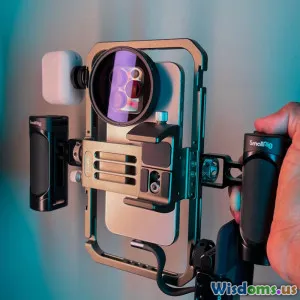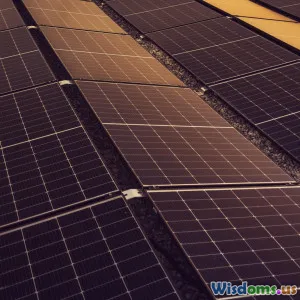
Is 8K Filmmaking Worth the Hype?
8 min read Explore whether 8K filmmaking lives up to the hype by analyzing its benefits, challenges, and real-world applications. (0 Reviews)
Is 8K Filmmaking Worth the Hype?
In recent years, 8K resolution has become a hot topic in the filmmaking and photography world. Cameras boasting 8K capture capabilities promise unprecedented detail and cinematic quality, prompting questions: Is embracing 8K truly beneficial, or is it mostly hype? With Hollywood studios and content creators testing the deep waters of ultra-high definition, it’s essential to understand what 8K filmmaking entails, its practical uses, technical demands, and whether the investment fits the broader creative and budgetary landscape.
Understanding 8K: Beyond the Pixels
8K refers to a horizontal display resolution of approximately 8000 pixels, quadrupling the number of pixels found in the current 4K (Ultra HD) standard and surpassing Full HD by sixteen times. The resolution is roughly 7680 x 4320 pixels, delivering an astonishing 33.2 million pixels on screen.
To put this in perspective, standard Full HD (1920 x 1080) has around 2 million pixels, making 8K exceptionally precise in detail—each frame is packed with information, akin to a high-res photograph snapped 30 or more times per second.
Advantages of 8K Filmmaking
1. Extraordinary Image Detail and Quality
Filmmakers can capture ultra-fine details rarely seen before on commercial displays or cinema screens. Every nuance—be it intricate fabric textures, subtle facial expressions, or expansive landscapes—becomes vividly real. Renowned director Terrence Malick, noted for natural visuals, experimented with 8K cameras in "A Hidden Life," harnessing unprecedented clarity.
2. Flexibility in Post-Production
8K footage grants impressive latitude for cropping, reframing, and zooming without sacrificing quality. This is a boon for editors who want to fix framing issues or create digital pans from static shots without the softness inherent in zooming HD footage.
3. Future-proofing Content
With the evolution of displays, 8K TVs and monitors are gradually entering markets, albeit at a slower pace than 4K. Shooting in 8K today ensures content remains sharp and relevant for years. Netflix, Amazon Prime Video, and broadcasters are already considering 8K production for flagship content to stay ahead.
Example: "Billy Lynn’s Long Halftime Walk" was one of the first major Hollywood productions shot in 8K, aiming to leverage the resolution for immersive storytelling.
Real-World Challenges of 8K
While the potential is inspiring, there are significant hurdles:
1. Massive Storage and Data Management
8K files quadruple the data size compared to 4K, demanding faster, larger, and costlier storage solutions. As an example, shooting 8K RAW at 24 fps requires hundreds of gigabytes per hour. High-capacity NVMe SSDs and RAID arrays become necessities, pushing budgets upward.
2. Demands on Post-Production Hardware and Software
Editing and color grading 8K videos require robust systems with latest-generation CPUs, GPUs, and massive RAM pools. Many video editing software programs are only beginning to support efficient 8K workflows, complicating or slowing the editing process.
3. Limited Display Infrastructure
Though 8K TVs exist, their adoption remains limited due to high costs and modest availability of true 8K content. Streaming platforms also struggle to deliver because of bandwidth constraints.
4. Questionable Viewer Benefit
Most viewers experience content on devices ranging from smartphones to 4K sets. The perceptible improvement in detail from 4K to 8K diminishes unless viewed on very large screens from close distances. According to display experts, the difference becomes subtle beyond 65 inches from an average viewing distance.
Industry Adoption and Trends
Major players like RED Digital Cinema and Canon, with cameras like the RED Weapon 8K and Canon EOS R5, are pushing filmmakers toward 8K. However, adoption varies:
- Big-budget productions: The extra resolution supports immersive visual effects integration and future-proof masters.
- Documentaries and Nature Films: Fine detail helps capture breathtaking scenes but comes with increased logistical complexity.
- Independent Filmmakers: Many find 8K equipment cost-prohibitive and maintain 4K or HD workflows.
Disney and National Geographic have experimented with 8K for their nature documentaries to maximize visual realism, capturing technology’s advantage.
Is 8K Worth It Today?
When to Consider 8K
- If your project requires extreme detail or significant post-production cropping and zooming capabilities.
- When producing content that aims for future-proofing or will be showcased in high-end venues with appropriate displays.
- If you have the budget and technical resources to handle the workflow challenges.
When 8K May Not Be the Best Choice
- If your primary distribution will be online streaming where bandwidth and consumer devices limit perceptible benefits.
- Projects on tight budgets where managing storage, editing equipment, and data management poses a serious challenge.
- When quick turnaround and simpler workflows are priorities.
Conclusion: The Verdict on 8K Filmmaking
8K filmmaking undoubtedly pushes creative boundaries, offering extraordinary image quality and future-proof content potential. It empowers filmmakers with flexibility and a level of detail that can elevate visual storytelling, especially in high-end productions.
However, for many creators today, the costs—financial, technical, and logistical—might outweigh the benefits. The mainstream adoption curve for consumer 8K displays is still climbing, and for most viewers, 4K remains visually sufficient.
Ultimately, whether 8K filmmaking is worth the hype depends on your project’s goals, budget, and resources. For blockbuster cinema, premium nature docs, or archival-grade content, it can be a game-changer. For everyday production, careful consideration ensures that the hype doesn’t lead to unnecessary complexity.
As technology advances and infrastructure improves, the landscape around 8K will evolve, potentially making it a more accessible standard. Until then, filmmakers should weigh their needs critically, balancing innovation with practicality.
References
- RED Digital Cinema 8K Specifications & Real-World Use Cases
- Canon EOS R5 8K Video Review – DPReview
- "Billy Lynn’s Long Halftime Walk" Production Insights, Variety
- Netflix Tech Blog: Streaming Resolutions and Future Trends
- DisplayMate Technology Articles on Viewing Distance and Resolution
Author Bio: John Miller is a cinematographer and film technology analyst with over a decade of experience exploring evolving video standards and filmmaking tools.
Rate the Post
User Reviews
Popular Posts





















